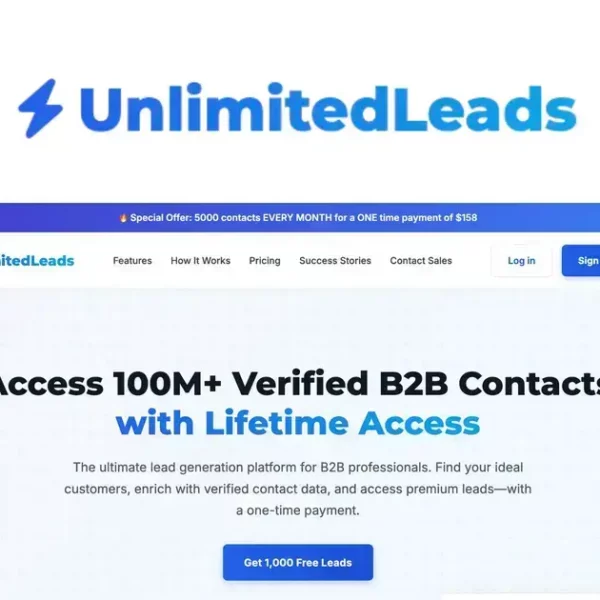To generate more leads, businesses should utilize effective strategies such as content marketing, social media engagement, and targeted advertising. Measuring success through key metrics and continuous optimization ensures that lead generation efforts are efficient and impactful.
Are you struggling to generate more leads for your business? You’re not alone! Many entrepreneurs face this challenge in today’s competitive market. But fear not—this article will guide you through effective strategies that can help you attract and convert potential customers. With the right approach, you can boost your lead generation efforts and drive growth like never before.
Understanding Lead Generation
Understanding lead generation is crucial for any business looking to grow and succeed. It involves attracting and converting prospects into potential customers. A lead is usually a person or organization that has shown interest in your company’s products or services.
What are Leads?
Leads can be categorized into several types:
- Cold Leads: Individuals who have not expressed interest yet.
- Warm Leads: Potential customers who have interacted with your business in some way.
- Hot Leads: These are highly interested prospects likely to make a purchase soon.
Why is Lead Generation Important?
Effective lead generation increases your sales pipeline and can significantly boost your revenue. By consistently attracting new leads, you maintain a healthy flow of potential customers, ensuring your business remains sustainable and profitable.
Basic Components of Lead Generation
Key components of a successful lead generation process include:
- Target Audience Research: Understanding who your ideal customers are helps tailor your marketing strategies effectively.
- Value Proposition: Clearly articulating the benefits of your product or service can attract more leads.
- Marketing Channels: Utilizing various channels like social media, email, and content marketing is essential for reaching a broader audience.
By mastering the art of lead generation, businesses can better connect with their audience and drive growth.
Top Techniques to Generate More Leads

To successfully generate more leads, businesses must implement various effective techniques. Each method can attract potential customers and guide them through the sales funnel. Below are some of the top techniques you can use to enhance your lead generation efforts.
1. Content Marketing
Creating valuable, informative content helps to engage your target audience. This could include blog posts, ebooks, and infographics. Good content attracts visitors and encourages them to share their contact information in exchange for more valuable resources.
2. Social Media Marketing
Active presence on social media platforms is essential. Use targeted ads and organic posts to reach your audience. Engaging with followers through comments and messages can also foster interest that leads to potential leads.
3. Email Marketing
Email remains a powerful tool for lead generation. Sending personalized emails to your subscribers can keep them informed and encourage them to engage further with your business. Use newsletters, special promotions, and informative updates to nurture these leads.
4. Search Engine Optimization (SEO)
Optimizing your website for search engines can increase visibility and attract organic traffic. Focus on targeted keywords, create quality backlinks, and ensure your site offers a good user experience. This can result in more leads coming to your site through search engines.
5. Webinars and Online Workshops
Hosting webinars and online workshops is a great way to attract leads. These sessions allow you to showcase your expertise while providing valuable information. Attendees are usually willing to share their contact details to join these events.
Implementing these techniques can significantly boost your ability to generate more leads and increase your business growth.
Using Social Media for Effective Lead Generation
Social media is a powerful tool for effective lead generation. With billions of active users, platforms like Facebook, Instagram, LinkedIn, and Twitter can help businesses connect with potential customers. Here are some strategies to utilize social media for lead generation.
1. Build a Strong Brand Presence
Creating a recognizable brand on social media is essential. Use consistent branding elements like logos, colors, and tone across all platforms. Engage with users by regularly posting updates, promotions, and relevant content that resonates with your target audience.
2. Use Targeted Advertising
Social media platforms offer robust advertising features that allow businesses to reach specific audiences. Use targeted ads to promote products or services, and offer incentives like discounts to attract leads. Define your audience based on demographics, interests, and behaviors for the best results.
3. Create Engaging Content
Your content should be engaging and valuable. Use eye-catching visuals, videos, and interactive posts to capture attention. Share informative articles, host Q&A sessions, or run polls to engage your audience and encourage interaction.
4. Leverage Influencer Partnerships
Collaborating with influencers can expand your reach and attract new leads. Find influencers in your niche who align with your brand values. Their endorsement can build trust and direct their followers to your business.
5. Use Lead Generation Forms
Many social platforms allow you to create lead generation forms that can capture user information directly. Use these forms in your ads or posts to collect email addresses, phone numbers, and other contact details in exchange for more information or exclusive offers.
By effectively utilizing social media platforms, businesses can generate more leads and build lasting relationships with potential customers.
The Role of Content Marketing in Lead Generation

Content marketing plays a crucial role in lead generation. It involves creating valuable content that attracts, engages, and converts potential customers. Here are key aspects of how content marketing can generate leads effectively.
1. Attracting Target Audience
By producing high-quality content that addresses the interests and pain points of your target audience, you can draw in visitors who are interested in your industry. This could include blog posts, videos, podcasts, and infographics.
2. Building Authority and Trust
Consistently delivering valuable content helps establish your brand as an authority in your field. When potential leads recognize your expertise, they are more likely to trust you and consider your products or services over competitors.
3. Driving Traffic through SEO
Optimizing your content for search engines is essential. Use relevant keywords and phrases that potential leads might search for. High-ranking articles will drive organic traffic to your website, increasing the chances of conversion.
4. Utilizing Lead Magnets
Lead magnets are tools that capture potential leads’ contact info in exchange for valuable content, like ebooks, white papers, or webinars. These resources should be relevant and useful to your audience to encourage sign-ups.
5. Nurturing Leads through Email Campaigns
Once leads are captured through content marketing efforts, you can nurture them through targeted email campaigns. Share more valuable content, updates, and special offers to keep your brand on their minds and guide them further along the buyer journey.
In summary, content marketing is a powerful strategy to generate leads, as it not only attracts potential customers but also builds a lasting relationship with them.
Measuring Success: Analyzing Your Lead Generation Strategy
Measuring success in your lead generation strategy is crucial to understanding what works and what needs improvement. Tracking key metrics helps you optimize your efforts and maximize results. Here are important aspects to consider when analyzing your lead generation strategy.
1. Set Clear Goals
Before measuring success, define what success looks like for your business. This could include specific targets such as the number of leads generated, conversion rates, or revenue growth. Set measurable and achievable goals for better tracking.
2. Monitor Key Performance Indicators (KPIs)
Identify and track essential KPIs to assess the effectiveness of your lead generation initiatives. Common KPIs include:
- Lead Conversion Rate: The percentage of leads that turn into customers.
- Cost Per Lead: How much it costs to acquire each lead.
- Lead Source Performance: Which channel (e.g., social media, email, etc.) generates the most leads.
3. Analyze Engagement Metrics
Engagement metrics help you understand how potential leads interact with your content. Track metrics such as page views, time spent on page, click-through rates, and bounce rates. These insights show what content resonates with your audience.
4. Use CRM Tools
Customer Relationship Management (CRM) tools are essential for tracking leads throughout the sales funnel. These systems help you manage contact details, interactions, and stages of leads, allowing for better analysis and follow-up.
5. Continuously Optimize Your Strategy
Regularly review and refine your lead generation strategy based on the data you collect. Experiment with different tactics, channels, and messaging to find what yields the best results. Adapting your approach is essential for long-term success.
By effectively measuring success and analyzing your lead generation strategy, you can ensure efficient use of resources and better alignment with your business goals.
Summing Up Effective Lead Generation Strategies
In today’s competitive market, generating leads is vital for business growth. By using a mix of strategies such as content marketing, social media engagement, and targeted advertisements, you can attract potential customers effectively.
Measuring the success of your lead generation efforts helps you understand what works and what needs improvement. Set clear goals, monitor important metrics, and adjust your strategies as needed. This way, you can enhance your approach and ensure long-term success.
Remember, generating more leads takes time and consistency. Keep refining your strategies, and you’ll see the benefits unfold.
FAQ – Frequently Asked Questions about Lead Generation Strategies
What is lead generation?
Lead generation is the process of attracting and converting potential customers into leads through various marketing strategies.
Why is content marketing important for lead generation?
Content marketing helps attract target audiences by providing valuable information, establishing authority, and nurturing leads through strategic content.
How can social media help in generating leads?
Social media allows businesses to engage with potential customers, promote content, and run targeted ads to reach a larger audience.
What metrics should I track for lead generation success?
Important metrics include lead conversion rate, cost per lead, and engagement metrics like click-through rates and time spent on page.
How can I optimize my lead generation strategies?
Regularly reviewing and analyzing your lead generation efforts allows for making adjustments and trying new tactics to improve results.
What are lead magnets and how do they work?
Lead magnets are incentives like ebooks or webinars offered in exchange for contact information, helping businesses capture leads effectively.




